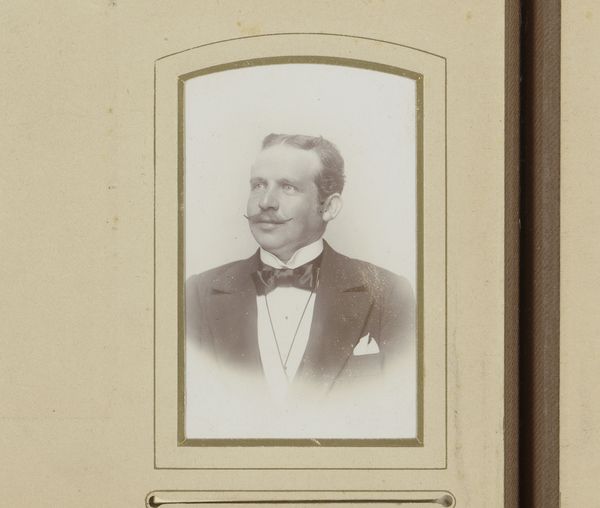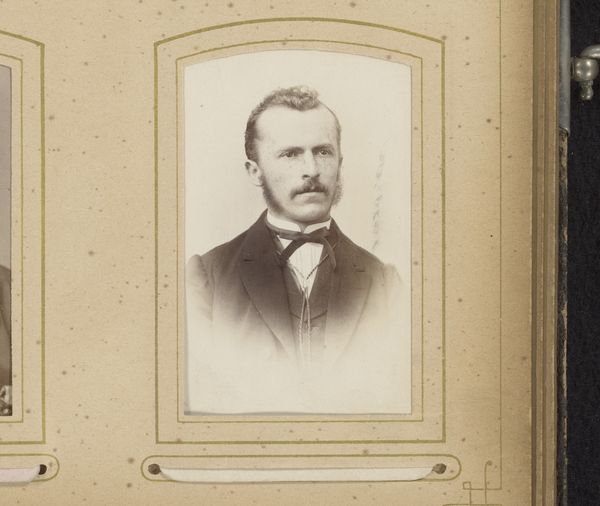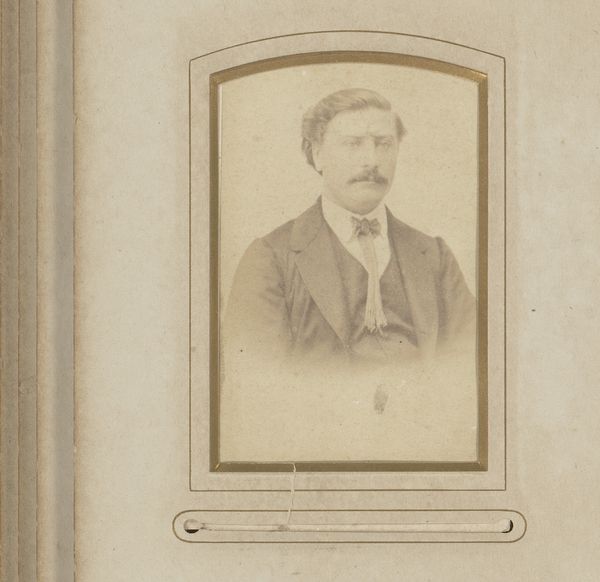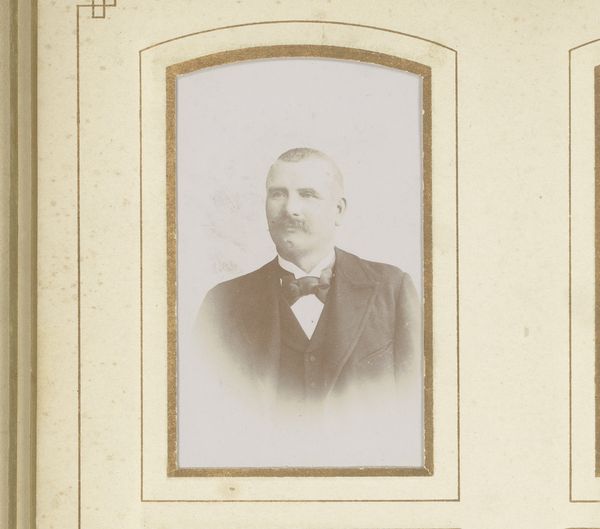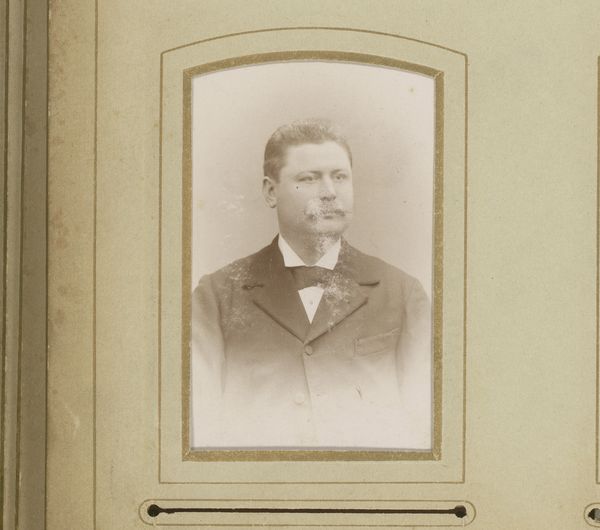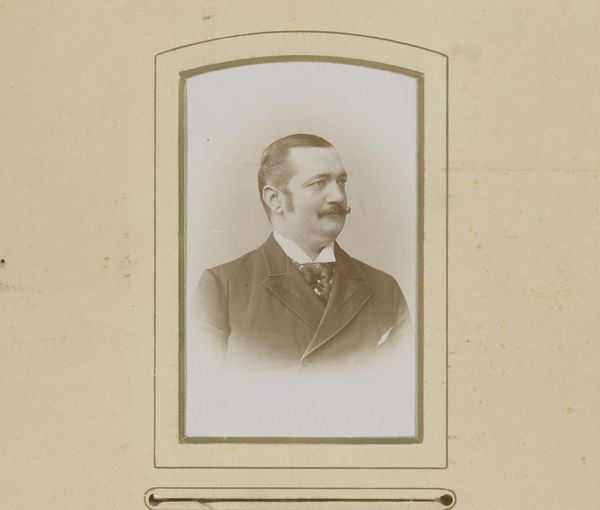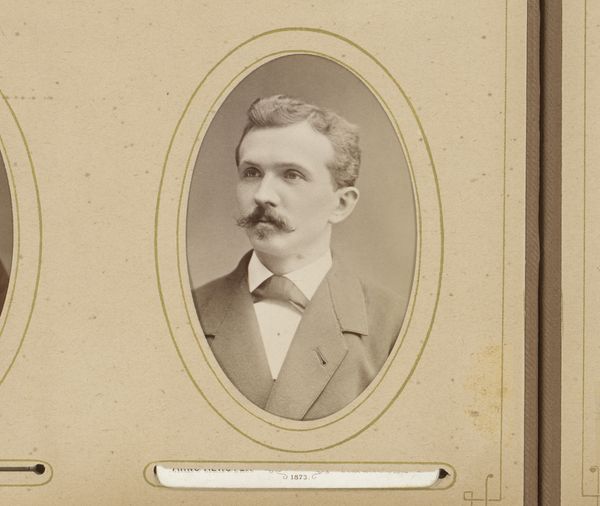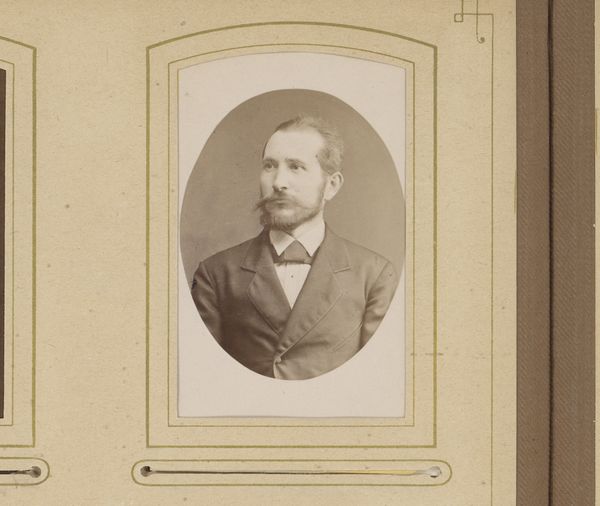
photography
#
portrait
#
still-life-photography
#
photo restoration
#
photography
#
framed image
#
realism
Dimensions: height 85 mm, width 52 mm
Copyright: Rijks Museum: Open Domain
This is a portrait photograph by Blanckart Frères, a carte-de-visite, which translates from French as ‘visiting card’. These small photographs were usually made using the wet collodion process, invented in 1851. This involved coating a glass plate with light-sensitive chemicals, exposing it in the camera while still wet, and then developing it immediately. The resulting glass negative could then be used to make multiple prints on paper. What’s interesting is that it brought photography into the realm of mass production, allowing studios like Blanckart Frères to produce affordable portraits for a growing middle class. Each carte-de-visite became a small token of identity, a way to participate in a visual culture that was rapidly changing. The process democratized image-making, linking it to broader social issues of class, labor, and consumption. Photography, once a cumbersome and expensive process, became a collectible and a marker of social status. This reminds us that even the most seemingly straightforward images are tied to complex historical and economic forces.
Comments
No comments
Be the first to comment and join the conversation on the ultimate creative platform.
